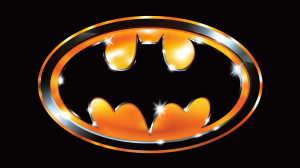
Mission Impossible: Fallout is a bona fide hit. Its opening weekend has been filled with rave reviews and has set a box office record among the six Mission Impossible films thus far. At this point, it is clear that the Tom Cruise-driven, action films aren’t going anywhere and can still keep up in a modern cinema landscape filled with popular franchises. Competing in a summer packed with new movies related to Star Wars, Marvel, Pixar, and more is no easy task, but that’s exactly what the crew both in and outside of the Mission Impossible films do.
Videos by ComicBook.com
While it’s clear that Mission Impossible: Fallout can compete with other blockbuster franchises, there is something more to this collection of movies than the competition. Looking at their history and finished films, they stand apart from the other dominant franchises that rake in so much cash at the box office throughout the year now. Comparing an adrenaline-fueled spy thriller to sci-fi sagas in a galaxy far, far away or superheroic crossovers would be an unfair case of apples and oranges. However, looking at how these franchises are made and received makes for a more reasonable basis of comparison. It also makes one thing exceedingly clear: Mission Impossible is the best franchise in Hollywood today.

Focus on Filmmaking
Most modern franchises focus on an ongoing narrative or marketable set of characters as the source of inspiration for their films. Star Wars is a saga. Marvel Comics are about a world filled with heroes. In turn they build out entire lines of television series, action figures, and much, much more. It has been enormously profitable for the corporations that produce them and provides fans with immersive experiences that they can enjoy in some form almost every day of the year. However, this has also allowed the focus on filmmaking to sometimes fill a secondary role. That has never been the case with Mission Impossible.
While the movies have changed a great deal with a rotating set of directors, two key threads connect them all: real stunts and shooting on location. While Tom Cruise’s insistence for shooting stunts without the use of CGI has become something of a gag among some fans, the results are apparent every time a new movie hits the big screen. Seeing stars actually engaged in motorcycle chases, flying helicopters, or dangling over mountain passes releases a small amount of adrenaline. We as audiences can still tell the difference between witnessing reality and a simulacrum of reality on film. There is no better action movie in 2018 because of Cruise’s insistence on showing audiences something real.
That crosses over to the franchise’s history of shooting on location. Mission Impossible movies take audiences across the world and reveal landscapes every bit as stunning as alien worlds composed by computers. In much the same way that Lord of the Rings explored the most wonderful areas of New Zealand, these films are devoted to immersing audiences in incredible locales that actually exist. There is more reality actually being committed to film in a Mission Impossible movie than in any other blockbuster franchise today.

Talent-Driven Production
There’s not doubt that these choices stem from the talent behind the Mission Impossible franchise. The movies are tied to Tom Cruise in a way that there would be no more Mission Impossible without him. In turn his insistence on things like shooting live stunts and on location are honored by studios that might prefer to limit their insurance payments by doing otherwise. Cruise and his fellow producers and talent exude a love for filmmaking in their interviews and behind-the-scenes features. They understand the importance of capturing something unique with a camera, and have managed to keep the Mission Impossible franchise healthy across six movies and 22 years as a result.
They have also kept a healthy rotation of talented directors behind the camera, which has resulted in one of the most varied franchises in Hollywood ever. Mission Impossible: Fallout is the very first time a director has returned to the series and also the only direct sequel in the series’ history. Before Christopher McQuarrie directed the two most recent installments, Mission Impossible was already a who’s who of top names in Hollywood: Brian De Palma, John Woo, J.J. Abrams, and Brad Bird. While not every installment will click with every viewer, there is almost certainly a Mission Impossible for everyone and this variety has kept the franchise inventive and healthy.

The Healthiest Fanbase in Hollywood
Mission Impossible isn’t just a healthy franchise behind the camera, it also features some of the healthiest discourse among its fans. In the modern political era there is an unfortunate side effect of having toxic movements associated with any popular entertainment. Both Star Wars and Marvel Studios have been forced to confront ugly attacks on their talent from fans who dislike what is on the screen or the opinions of the stars. As a result, both creators and sensible audiences are left with an ugly association between the movies they love and the real world.
Mission Impossible has managed to stay clear of this form of controversy, in part due to its lack of outside history or influence. It has remained something specific instead of sprawling out to every aspect of the cultural conversation, mirroring an argument Sean T. Collins made about the fandom of Dune. These movies remain something purely cinematic in nature, and that has helped to maintain a healthy fandom without pursuing some impossible notion of neutrality.
The brilliant part about Mission Impossible as a franchise is that it supports conversations ranging from how exciting a single action sequence was to how its insistence on location shooting can be traced back to the tradition of Italian Neorealism. It is a franchise that supports movie buffs of every stripe, embracing an entire audience who love film in their own unique manner. Mission Impossible is the movie franchise that is most connected to the art of cinema, and that’s something to be celebrated.








